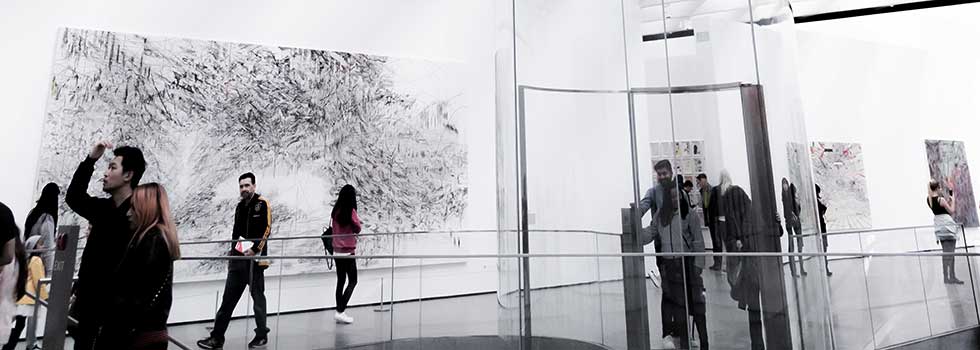It may sometimes be useful to distinguish between diachronic and synchronic museums. According to University of Florida's Professor Eric Kilgerman, "While a museum in which a particular narrative unfolds within its halls is diachronic, those museums that limit their space to a single experience are called synchronic."
Architectural museums are institutions dedicated to educating visitors about architecture and a variety of related fields, often including urban design, landscape design, interior decoration, engineering, and historic preservation. Additionally, museums of art or history sometimes dedicate a portion of the museum or a permanent exhibit to a particular facet or era of architecture and design, though this does not technically constitute a proper museum of architecture.
The International Confederation of Architectural Museums (ICAM) is the principal worldwide organisation for architectural museums. Members consist of almost all large institutions specializing in this field and also those offering permanent exhibitions or dedicated galleries.
Architecture museums are in fact a less common type in the United States, due partly to the difficulty of curating a collection which could adequately represent or embody the large scale subject matter.
Museums of architecture are devoted primarily to disseminating knowledge about architecture, but there is considerable room for expanding into other related genres such as design, city planning, landscape, infrastructure, and even the traditional study of history or art, which can provide useful context for any architectural exhibit.
The American Society of Landscape Architects has professional awards given out every year to architectural museums and art displays. A few of the award-winning projects are: Perez Art Museum Miami: Resiliency by Design,
Archaeology museums specialize in the display of archaeological artifacts. Many are in the open air, such as the Agora of Athens and the Roman Forum. Others display artifacts found in archaeological sites inside buildings. Some, such as the Western Australian Museum, exhibit maritime archaeological materials. These appear in its Shipwreck Galleries, a wing of the Maritime Museum. This Museum has also developed a 'museum-without-walls' through a series of underwater wreck trails.
An art museum, also known as an art gallery, is a space for the exhibition of art, usually in the form of art objects
from the visual arts, primarily paintings, illustrations, and sculptures. Collections of drawings and old master prints are often not displayed on the walls, but kept in a print room. There may be collections of applied art, including ceramics, metalwork, furniture, artist's books, and other types of objects. Video art is often screened.
The specialised art museum is considered a fairly modern invention, the first being the Hermitage in Saint Petersburg which was established in 1764.
The Louvre in Paris was established in 1793, soon after the French Revolution when the royal treasures were declared for the people. This showed the beginnings of removing art collections from the private domain of aristocracy and the wealthy into the public sphere, where they were seen as sites for educating the masses in taste and cultural refinement.
Children's museums are institutions that provide exhibits and programs to stimulate informal learning experiences for children. In contrast with traditional museums that typically have a hands-off policy regarding exhibits, children's museums feature interactive exhibits that are designed to be manipulated by children. The theory behind such exhibits is that activity can be as educational as instruction, especially in early childhood. Most children's museums are nonprofit organizations, and many are run by volunteers or by very small professional staffs.
